- Home
- Bruce Sterling
Pirate Utopia
Pirate Utopia Read online
— ALSO BY BRUCE STERLING —
Novels
Involution Ocean (1977)
The Artificial Kid (1980)
Schismatrix (1985)
Islands in the Net (1988)
The Difference Engine (with William Gibson) (1990)
Heavy Weather (1994)
Holy Fire (1996)
Distraction (1998)
Zeitgeist (2000)
The Zenith Angle (2004)
The Caryatids (2009)
Love Is Strange: A Paranormal Romance (2012)
Collections
Crystal Express (1989)
Globalhead (1992)
Schismatrix Plus (1996)
A Good Old-Fashioned Future (1999)
Visionary in Residence (2006)
Ascendancies: The Best of Bruce Sterling (2007)
Gothic High-Tech (2012)
Edited by
Mirrorshades: The Cyberpunk Anthology (1986)
Twelve Tomorrows (2014), (2015)
Nonfiction
The Hacker Crackdown: Law and Disorder on the Electronic Frontier (1992)
Tomorrow Now: Envisioning the Next Fifty Years (2002)
Shaping Things (2005)
The Epic Struggle of the Internet of Things (2014)
— PRAISE FOR BRUCE STERLING —
“He understands technology’s present and future better than anyone in the field.” —Cory Doctorow, author of Little Brother
“[Sterling’s] highly caffeinated energy is hard to resist.” —Publishers Weekly
“Climb aboard Sterling’s speculative roller coaster; a dazzling, eye opening ride through the modern world....” —The Village Voice
“Science fiction that makes the rest of near-future SF look toylike by comparison. It’s as if Sterling is the only writer paying attention to what’s happening in the real world.” —Locus
“Love him or hate him, Bruce Sterling always has something important to say....” —Bookmarks Magazine
“Sterling’s cutting-edge knowledge of cultural movements, emerging and dead technologies, conspiracies, and tipping points makes Zeitgeist a powerful, poignant, and hilarious read as the twentieth century gives way to the new millennium.” —Booklist on Zeitgeist
“Turn-of-the-millennium spectacular…Y2K’s Catch 22!” —Kirkus, starred review on Zeitgeist
“Breathtaking.” —New York Times Book Review, on The Difference Engine (with William Gibson)
“Bruce Sterling has managed to pen a delivery vessel for a futuristic, anarchistic dystopian idea of human potential. And in the end, Gothic High-Tech leaves the reader with the notion that even with all this mess, there are ways out of every quandary—even if those ways are unimaginable now or far different than we’d hoped.” —New York Journal of Books, on Gothic High-Tech
“A tour de force… Of all the horde of SF novels about clones written since that trope was pulled mewling from its artificial womb, The Caryatids is the first one that nails it.” —Benjamin Rosenbaum, author of The Ant King and Other Stories, on The Caryatids
“Gleeful, shrewd, speculative, cynical, closely observed…The Zenith Angle offers wisdom and solace, thrills and laughter.” —Washington Post, on The Zenith Angle
“A comedic thriller for the Homeland Security era.” —Entertainment Weekly, on The Zenith Angle
“A haunting and lyrical triumph” —TIME, on Holy Fire
“Written with humor and intelligence, this book is highly recommended.” —Library Journal, on The Hacker Crackdown
INTRODUCTION by WARREN ELLIS
CAST OF CHARACTERS
1. THE PIRATE CINEMA
2. THE ACE OF HEARTS
3. THE BRAVE NEW WORLD
4. THE PLATONIC LOVERS
5. THE MAN WITHOUT FEAR
6. THE GLORIOUS UTOPIA
TO THE FIUME STATION: Afterword by Christopher Brown
INTERVIEW WITH BRUCE STERLING by Rick Klaw
RECONSTRUCTING THE FUTURE: Notes on design by John Coulthart
BIOGRAPHIES
From where I sit it today, pirate coun try starts about ten miles east of me. Foulness, Paglesham and the Blackwater. To this day, pubs out there go silent when a stranger walks in. You’re stand ing on their dirt, after all. A life on the ocean waves is one thing, but blood and soil are entirely another.
Like the author of the marvelous little book you’re about to read, I work in the future. But, being British, I also work in the past, because, being British, we don’t have a hell of a lot else to work with. We wrote ourstories big on the landscape here, in standing stones and earthworks. Sea tales have nothing on the yarns we tell ourselves from dry land about the things to come.
Pirate utopias are a fiction, a social speculation spun out of stories of secret supply-base islands and anarchist colonies. The most famous, the fabled Libertatia of the 1600s, was probably invented pseudonymously by Daniel Defoe, downriver in London. And Defoe wasn’t even his real last name. Fictions upon fictions upon fictions.
You may detect early on that more than one story is being told here.
Futurism, the business of the future, is the act of telling stories about what’s next. Futurism, the movement, cofounded by F. T. Marinetti, was also, in its way, a story about blasting away the past and riding mad technology into fortune. Futurism was about speed, and machines, and, ultimately, blood and dirt. Marinetti’s epiphany was crashing his car into a ditch to avoid some cyclists, emerging from the pit as a man of the Future, hell-bent on changing the course of history, celebrating war and scrubbing the world clean of freedom. He and his weird crew of poet-seers worked hard to export their mad dreams of velocity and gore abroad. But it had the smell of blood and dirt about it. The Russians wouldn’t even let Marinetti talk when he came to put Moscow in motion— Cosmism was already murkily coursing around the country’s veins, a strongly nationalist futurism of their own that put the homeland at the centre of a tomorrow devoted to bringing its sons and fathers back from death itself.
In this part of the world, futurism always seemed to come with nationalism. You needed a big old launchpad to operate the rockets of the new world from, and there are people today who will tell you it’s a lot easier to land your spacecraft on dirt than boats.
The Cosmist dream has yet to come true. The Futurist dream did. It was World War One. Big story, launched off the back of a tangle of improbable coincidences. Which Marinetti fought, in some glorious ironic absurdity, on a bike—part of an Italian Army mountain cyclist unit. God knows how they did so well against the Austro-Hungarians. World War One succeeded in largely cleaning the Futurists from the world, their stories buried in trenches. Marinetti on his omen bicycle somehow survived, committed to Fascism, and by the time this story starts, he, having drafted the Italian Fascist Manifesto (because, like a good Futurist, he did love his manifestos), is about to withdraw from public life in a huff because his new friends didn’t have enough forward speed. Reactionary elements were leaking into the enterprise, and, in his own future, Marinetti would give up to them in search of power in the new world.
In this same year, Marconi was firing the first radio entertainment broadcasts from Chelmsford, forty miles north of me, three years away from joining the Italian Fascist Party and ascending to government. It was a mad time. The sort of confluence that writers shake their heads dolefully at and intone, “If I’d tried to write that, people would never be able to suspend disbelief.” But seen from upstream, most previous times seem mad.
This is the swirl of old gunsmoke, exterminating art and war dreams within which Bruce Sterling couches this story. It’s always tempting to see mad times as a pivot point, around which ground lay the seeds of our own future. And this time is no different, set as it is on the
streets of a pirate bay. I’ve read this book three or four times now, and perhaps the thing that pleases me most is that Bruce turns into the skid. It’s a historical fiction that is fictionally true, a torpedo coursing through fact and fantasy and exploding as all possible stories and futures of the early Twentieth Century.
I do hope you enjoy this book as much as I did, relish its sly lessons on the nature of futurism, and cackle along with it as it takes flight into its dark cindery cloud of tomorrows gone by. Bruce Sterling always entertains, even when he’s firing torpedoes at us.
Warren Ellis
Southend-On-Sea
27 February 2016
The Regency of Carnaro
The Prophet [Gabriele D’Annunzio]: the military dictator of Fiume, its guiding light and great orator; renowned poet, Futurist Overman, and leader of the “Desperates.”
The Constitutionalist [Alceste de Ambris]: Carnaro’s greatest political theorist.
The Ace of Hearts [Guido Keller]: The Prophet’s right-hand man, and Secondari’s patron in the Fiume secret police; a charismatic combat air ace and renowned expert in aerial reconnaissance.
Lorenzo Secondari: The Pirate Engineer; former Army lieutenant and veteran of the Great War; gang-boss within the “Strike of the Hand Committee” (the fiercest pirate commandos of Fiume); later appointed Carnaro’s Minister of Vengeance Weapons.
Blanka Piffer: The Pirate Engineer’s business manager, interpreter, and purchasing agent; a Fiume native and Communist union leader; named “Corporate Syndicalist” and made dictator of her Torpedo Factory.
Maria Piffer: Blanka’s seven-year-old daughter; a true native child of the Twentieth Century.
Hans Piffer: Blanka’s husband; abandoned Fiume after the Great War to join the Communist uprisings in Vienna; later ran off to Berlin where he joined a group of ex-soldiers and was arrested.
The Pianist [Luisa Baccara]: The Prophet’s mistress; a ferocious Venetian patriot and classical musician.
The Art Witch [Luisa Casati]: a Milanese millionairesse, patroness of the arts, and occultist, who entertained The Prophet (another of his mistresses).
Giulio Ulivi: a young visionary Italian radio engineer; discovered a new form of radiation which he named the “F-Ray.”
Benito Mussolini: one of Carnaro’s boldest allies; scandalous editor of the Milanese newspaper Popolo d’Italia (People of Italy); shot in the groin by his ex-wife.
Valentine de Saint-Point: a Futurist dancing girl and companion of The Art Witch; participated in the attack on Mussolini with his ex-wife; author of the Manifesto of Futurist Lust.
Enrico Novelli, aka Yambo: Genoese satirical cartoonist and journalist, best known for his boys’ adventure books; succeeded Mussolini as editor of Popolo d’Italia.
Guglielmo Marconi: an irascible one-eyed Italian radio genius and close personal friend of The Prophet; a Senator in the Italian government who took over as head of the technical caretaker government following the government’s collapse.
The United States
Woodrow Wilson: President of the United States and tyrant of the League of Nations; gave Fiume away to Yugoslavia following the Great War, which resulted in the Fiume rebellion and the rise of the Regency of Carnaro; suffered a debilitating stroke while in office.
Colonel [Edward M.] House: President Wilson’s aide-de-camp, who now runs the government in Wilson’s absence; a Texas gentleman and Army cavalier.
Harry Houdini: The Man Without Fear; right-wing political activist and leader of the Secret Service spy delegation to the Regency of Carnaro; a magician of the black arts: “the greatest magician in the modern world.”
Howard [H. P.] Lovecraft: Houdini’s publicity agent and a member of the U.S. spy delegation.
Robert “Bob” Ervin Howard: Houdini’s teenage stage assistant and the third member of the U.S. spy delegation.
And Others
Adolf [Hitler]: a political extremist; during a beer-hall brawl he stepped in front of a bullet meant for Hans Piffer, thus giving his life to save another.
Joseph Goebbels: a political novelist; Hans Piffer’s cell-mate in Berlin who wrote a letter to Blanka Piffer on Hans’s behalf.
Giuseppina “Pina” Menichelli: an Italian silent film diva.
Plus a cast of thousands of bewildered Adriatic townsfolk.
“Limit to courage? There is no limit to courage.”
—Gabriele D’Annunzio
“I fear my enthusiasm flags when real work is demanded of me.”
—H. P. Lovecraft
To celebrate his new, improved torpedo, the engineer took his pirates to the movies.
The spectacles in Futurist Fiume amazed the pirates. They’d never seen motion pictures.
The engineer’s pirates were refugees and criminals. They felt rather shy about leaving their safe haven in the engineer’s Torpedo Factory. To encourage themselves, they sang a Croatian sea ditty and whistled loudly at the passing girls.
Using his cane, the engineer wobbled along in the wake of his nine pirate crewmen. His female companion helped him over a tangled mess of harbor rope. Frau Blanka Piffer was a native of Fiume. She served as the engineer’s business manager, interpreter, and purchasing agent.
The pirates left the dockside, with its dense mass of cranes, quays, and railway tracks. Downtown Fiume had a stone broadway with tall, peculiar gas-lamps. The church and the clock tower were the tallest buildings in the town.
The Croatian pirates were vividly conspicuous. All nine of them wore stolen women’s fur overcoats, cinched by thick leather army belts festooned with daggers, pistols, and hand grenades.
As the pirates swaggered by, the dames of Fiume fled inside the dress-shops. The gentlemen dropped their newspapers and abandoned their sidewalk cafés. Children hid themselves behind the horse-carts and fruit-stands. Even stray dogs ran off.
Frau Piffer tugged the engineer’s black sleeve. “Lorenzo: did you have to bring all these crooks to the movies with us? I thought we were going alone.”
“I told you to bring the daughter along,” said the engineer, reading her lips.
“I won’t take my innocent child to see that man-eater!” said Frau Piffer. “Your Turinese femme fatale!”
“Pina Menichelli is from Naples,” the engineer corrected. “You mustn’t fuss about cinema, my dear. The Prophet himself adores the movies. He wrote the script of Cabiria, the greatest motion picture ever filmed! Made in Turin, of course.”
Frau Piffer pursed her small, red lips, but she obeyed him.
Blanka Piffer was a Communist union leader. When the Great War had ended, her Torpedo Factory had been shuttered. Frau Piffer had lost both her livelihood and her husband, for Herr Piffer was an Austrian Communist agitator. Herr Piffer had abandoned Fiume and run off to join the violent uprisings in Red Vienna.
Frau Piffer’s Torpedo Factory in Fiume had become a gloomy Red Cross depot, where Frau Piffer doled out soup to her despairing factory girls.
Then the engineer had arrived in Fiume from Italy, intent on saving the day. The engineer was Lieutenant Lorenzo Secondari, a veteran of the Royal Artillery, Third Army.
Secondari had spent four years on the front lines of Isonzo, maintaining Italy’s war machinery. Constantly improvising under harsh battlefield conditions, making do with scrap, rivets, and steel wire, Secondari had deftly repaired Italian howitzers, trench mortars, FIAT trucks, pneumatic drills, even military telephones and radios.
Being from Turin, Lieutenant Secondari fully understood the needs of heavy industry. Once he’d met Frau Piffer inside her Torpedo Factory—(they had met because he was hungry, and he needed the Red Cross soup)—he’d been appalled to see such a splendid assembly line standing idle.
At his shouted insistence—Secondari was deaf from wartime cannon fire, so he tended to shout whenever he spoke—Frau Piffer’s Communist factory workers had declared a strike. They seized their empty Torpedo Factory and placed it under worker occupation.
Secondari
re-commenced local arms production with the simplest, most humble weapons he could create. These guns were crude single-shot derringers, punched from sheet-metal. The guns used ten-penny nails as firing pins, and they tended to burst.
He paid the striking workers with the flimsy handguns. The factory girls then swapped and bartered the guns with all the other women in Fiume.
The Torpedo Factory busily made hundreds of these cheap, nameless guns until the factory’s owner had shown up, and urged the workers to desist. Whining in his bourgeois, conformist fashion, this rich man had complained that the Great War was all over. He’d said that it was morally wrong to make more weapons in peacetime.
Secondari had seized the capitalist, beaten him up, shaved his head, and dosed him with castor oil. The wretch had fled Fiume for Switzerland, never to return.
Secondari’s Futurist fervor profoundly inspired the factory girls. Liberated by this swift change in their circumstances, they became eager factory pirates.
These female assembly workers found ways to re-purpose their factory tools, to illicitly copy the objects of their own desires. The girls happily banged out steel pots, pans, tableware, and kitchen stoves. They also redoubled their production of grenades and sea-mines.
The factory’s weapons found ready buyers, as the Occupation persisted and the rebel soldiers dug in. American men with Irish accents arrived in civilian sailboats. They took the sea-mines to torment Great Britain, and they paid with American dollars.
Some Turks arrived, too: clean-shaven fanatics from the insurgent army of Mustafa Kemal. These “Young Turks” were Western-educated Moslem rebels. They bought grenades and car-bombs, and they paid with black opium.
With this money in her hands, Frau Piffer transformed her dull, brick war-factory into a vibrant stronghold of Futurist feminism. Frau Piffer’s communal assembly line featured cake socials, tea breaks, and a generous childcare policy. Her factory’s public address system played American jazz records.

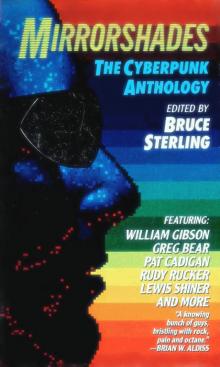 Mirrorshades: The Cyberpunk Anthology
Mirrorshades: The Cyberpunk Anthology The Wonderful Power of Storytelling
The Wonderful Power of Storytelling Love Is Strange (A Paranormal Romance)
Love Is Strange (A Paranormal Romance)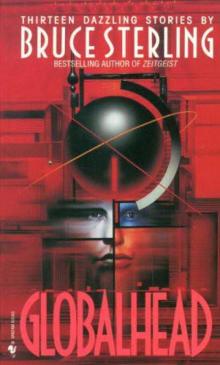 Globalhead
Globalhead Essays. FSF Columns
Essays. FSF Columns The Hacker Crackdown
The Hacker Crackdown Bicycle Repairman
Bicycle Repairman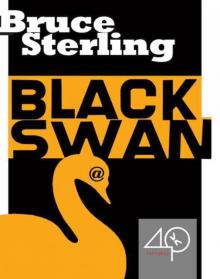 Black Swan
Black Swan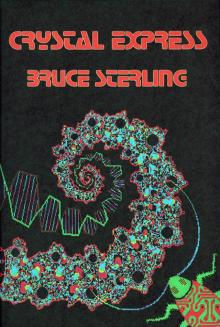 Crystal Express
Crystal Express Islands in the Net
Islands in the Net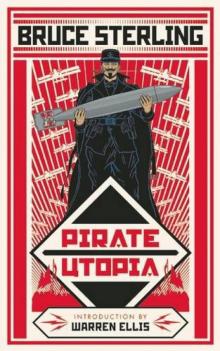 Pirate Utopia
Pirate Utopia GURPS' LABOUR LOST
GURPS' LABOUR LOST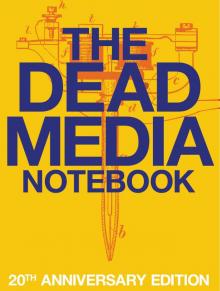 The Dead Media Notebook
The Dead Media Notebook Unstable Networks
Unstable Networks The Manifesto of January 3, 2000
The Manifesto of January 3, 2000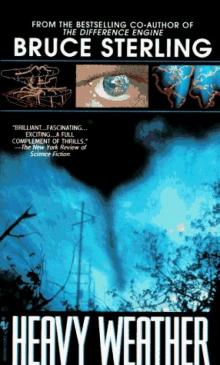 Heavy Weather
Heavy Weather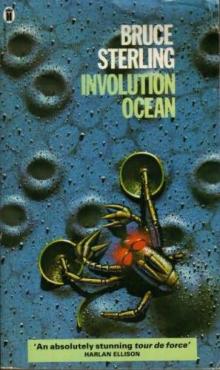 Involution Ocean
Involution Ocean The Epic Struggle of the Internet of Things
The Epic Struggle of the Internet of Things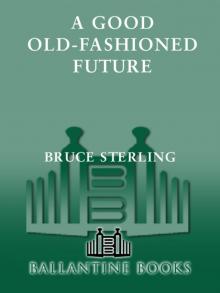 A Good Old-Fashioned Future
A Good Old-Fashioned Future The Littlest Jackal
The Littlest Jackal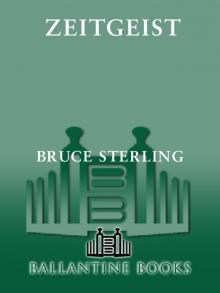 Zeitgeist
Zeitgeist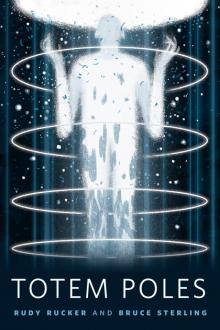 Totem Poles
Totem Poles Ascendancies
Ascendancies CyberView 1991
CyberView 1991 War Is Virtual Hell
War Is Virtual Hell Taklamakan
Taklamakan Holy Fire
Holy Fire Cyberpunk in the Nineties
Cyberpunk in the Nineties Schismatrix Plus
Schismatrix Plus The Artificial Kid
The Artificial Kid Essays. Catscan Columns
Essays. Catscan Columns Maneki Neko
Maneki Neko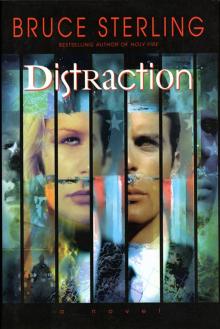 Distraction
Distraction In Paradise
In Paradise Red Star, Winter Orbit
Red Star, Winter Orbit Luciferase
Luciferase